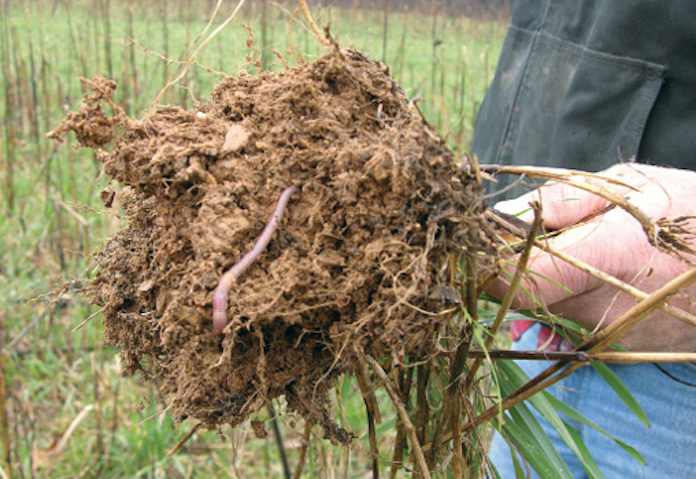Adding carbon to the soil is critical to restoring health to the soil by increasing the organic matter content.
Producers in today’s modern agricultural systems are working with soils that contain far less carbon than our soils originally contained prior to the implementation of modern agriculture. All of our soils are now degraded.
The good news is we now know how we can regenerate our soils and put the carbon back in the soil. This is a very simple process, but at the same time, also very difficult.
Finding Stability
So why is carbon so important? It’s the building block for soil health. As you increase the carbon content, you begin to improve the aggregate stability. These aggregates are formed by excretions from the soil microbes, which begin to stabilize the soil particles into larger aggregates. This provides the home for all the soil microbes living in these aggregates.
A healthy soil provides a healthy environment for these soil microbes. The microbes will provide the nutrient cycling of soil organic matter making nutrients available for the plants growing in the soil.
These aggregates also provide the pore space necessary to infiltrate and store water in the soil. In our semi-arid environment on the Plains, the ability to infiltrate and store water is critical to crop production.
Stable aggregates that can infiltrate and store additional water can also lower our irrigation pumping requirements by improving soil water efficiency. Lowering our groundwater consumption is critical to stabilizing the currently rapid decline of our groundwater resource.
It’s All Related
The carbon, nutrient, and water cycles in a healthy soil are all interrelated. In order for these cycles to perform to the best of their abilities, the soil must contain all of the necessary ingredients. If the soil is lacking carbon, the nutrient and water cycles are unable to perform to their highest abilities.
Unlike the other nutrients, there isn’t a synthetic carbon that can be added to the soil. Producers can go to the local fertilizer dealers and purchase nitrogen, phosphorous, chloride, calcium, zinc and other nutrients found in the soil.
You have to manage the soil and production practices to add carbon to the soil. Management practices that can increase the amount of carbon in the soil include minimal soil disturbance and leaving crop residues on the soil surface.
These management practices used in no-till crop production are the first step in improving soil carbon. These practices will improve soil carbon at a slow rate and reach a stabilized plateau in my opinion.
On our farm we’ve seen an increase of soil carbon in our 25 years of no-tilling. We’ve improved the carbon in the soil as our soil organic-matter levels have increased slowly over time.
I also feel we’re still well below where our soil carbon levels need to be. No-tilling is a step in the right direction, but if we’re going to add more carbon to our soil we’re going to have to change our production model.
I really believe that after all the years of no-tilling we’re still working with a degraded soil. If we adopt management strategies that add more carbon, I believe we can markedly improve the function and health of our soil.








Post a comment
Report Abusive Comment